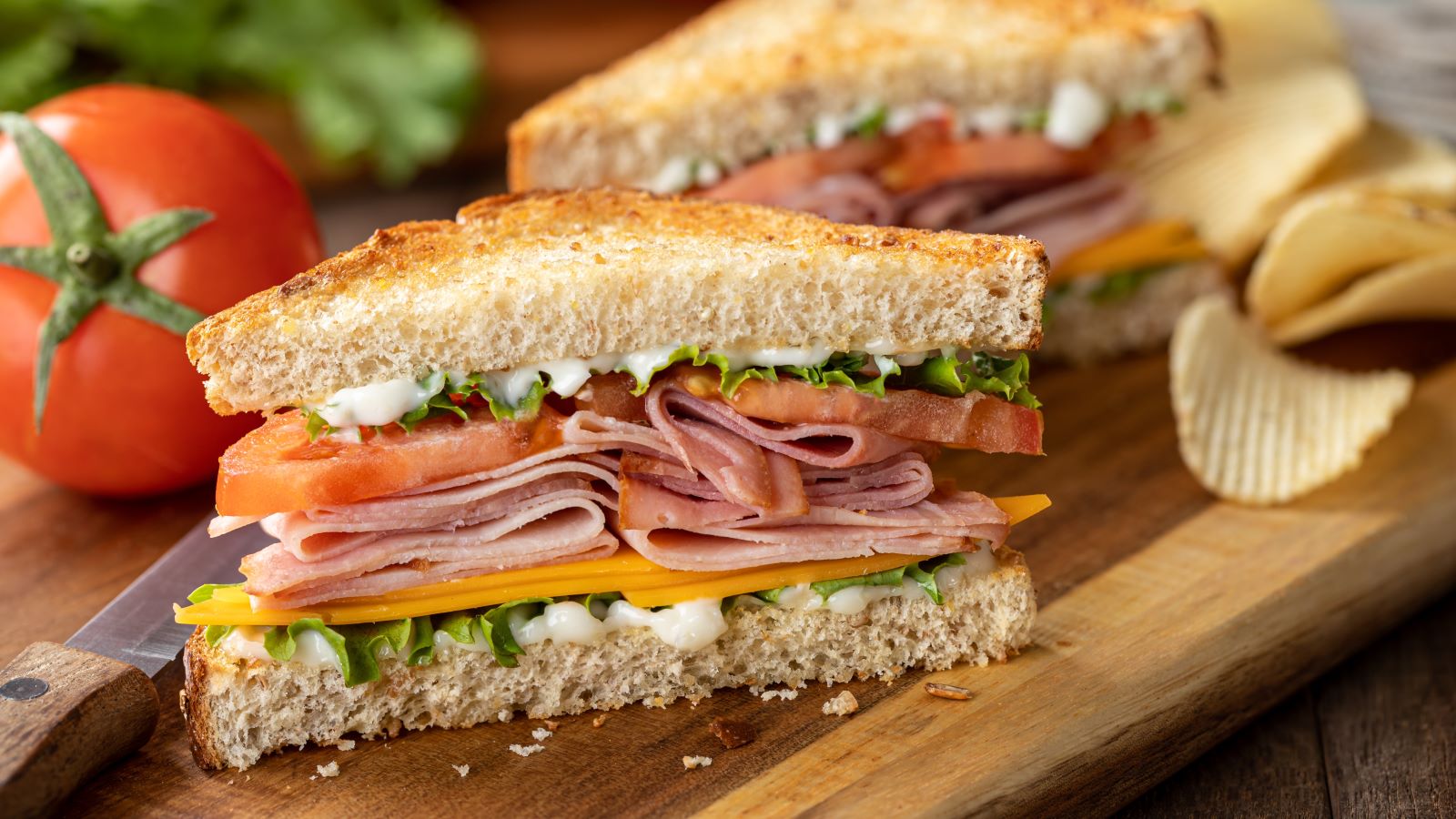<< Back
How to Build a Healthier Sandwich

November 22, 2025
When it comes to quick meals, sandwiches are tried and true. Easy, portable, endlessly customizable – what’s not to love?
But there’s a catch. Depending on how you craft it, your lunch could be nutrient-dense and energizing – or weighed down by processed meats, extra calories and added salt.
Trying to keep the convenience while making your sandwich a little healthier? Kumkum Modwel, MD, with Hartford HealthCare Medical Group, shares six simple ways to upgrade your favorites.
1. Bread matters
It all starts with a good foundation. White bread might be soft and delicious, but it’s often stripped of fiber and nutrients.
“Whole grain or sprouted breads are a better choice because they provide more fiber, which helps with digestion and keeps you full longer,” says Dr. Modwel. “They also give you steady energy instead of a quick crash.”
Try swapping your standard white loaf for whole grain, pumpernickel or even a whole wheat wrap. Your sandwich won’t just be better for you – it might taste better, too.
> Related: Is Sourdough Bread Healthy? Here’s What You Need to Know
2. Go easy on the deli meat
This might be hard to hear. Salami, ham and turkey might be sandwich staples, but they’re also loaded with sodium and preservatives.
“Processed meats have been linked to higher risks of heart disease and other health issues when eaten in excess,” says Dr. Modwel. “It doesn’t mean you can never eat them, but you wouldn’t want to have them every day.”
Try using smaller portions of deli meat and balancing them out with other proteins like grilled chicken, tuna or hummus.
3. Don’t forget the veggies
And no, one lonely piece of iceberg lettuce doesn’t count.
“Vegetables add fiber, crunch and nutrients without a lot of calories,” says Dr. Modwel. “They make your sandwich more filling, and bring tons of flavor, too.”
Layer in tomatoes, cucumbers, peppers, spinach, sprouts or any of your favorite vegetables. And remember: The more different colors, the better.
> Related: The 8 Best Vegetables for Your Health
4. Rethink your condiments
Mayonnaise and creamy dressings may taste great, but it doesn’t take much for them to sneak empty calories into your lunch.
“Condiments are often where the hidden fats and sugars creep in,” notes Dr. Modwel. “Swapping them out can make a big difference.”
Opt for mustard, avocado, hummus or a drizzle of olive oil instead. Bonus points if you add your favorite seasonings like oregano and garlic powder. You’ll still get plenty of flavor without overdoing it.
> Related: 4 Reasons to Eat More Avocado
5. Choose the perfect cheese
Just like deli meat, cheese can add saturated fat and sodium to your sandwich.
“Think of cheese as an accent, not the main ingredient,” says Dr. Modwel. “One slice is usually plenty, especially if you’re adding other flavorful toppings.”
Try to pick sharp cheeses like cheddar or parmesan, where a little goes a long way. And it might sound impossible, but you can even skip the cheese some days to let other ingredients steal the show.
> Related: 7 Easy Swaps to Make Any Soup a Little Healthier
6. Watch your portion size
Even the healthiest sandwich can go overboard if it’s oversized.
“Restaurant sandwiches are often double or triple the portion most people need,” says Dr. Modwel. “That can mean way more calories, sodium and fat than you realize.”
Stick to a regular sandwich instead of a giant sub, or pair half a sandwich with a salad or soup – it’s the healthier option.
> Related: 3 Tricks for Better Portion Control
How to put it all together
You don’t have to ditch your sandwich to eat healthier.
A few smart swaps — whole grain bread, extra veggies, lighter spreads — can transform your lunch into something both satisfying and good for you.
“Like we always say, it’s not about perfection, it’s about balance,” says Dr. Modwel. “Enjoy your favorite sandwich, just make it work for your health too.”